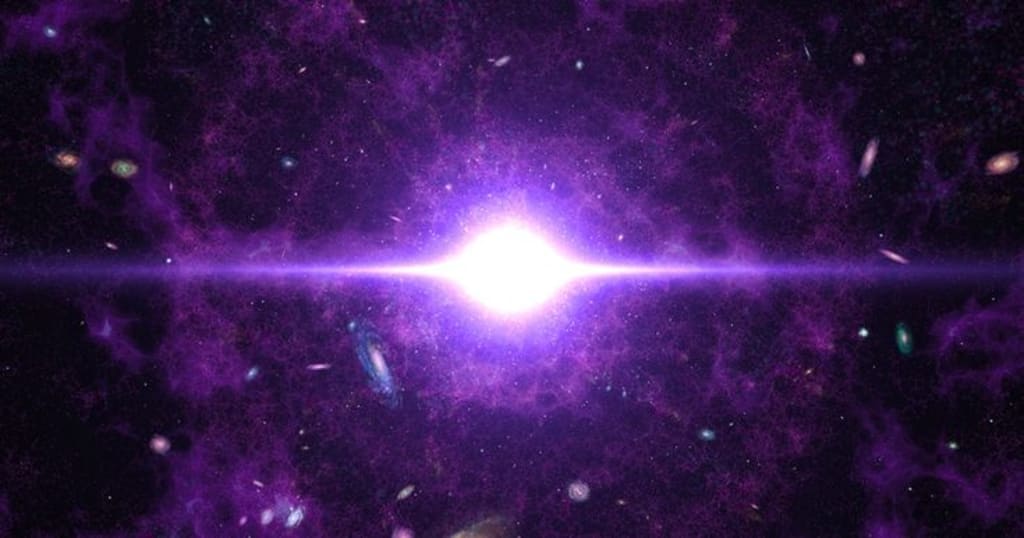NOTHINGNESS: BIRTH OF OUR UNIVERSE
Exploring the Enigma of Our Universe's Birth and What Lies Beyond

Delving into the origins of our vast universe and contemplating what existed before it may seem like an insurmountable challenge. Yet, amidst the complex web of theories and mysteries, let's journey through the intriguing ideas put forth by scientists.
In the 20th century, a pivotal moment in unraveling this cosmic riddle was marked by the pioneering work of Edwin Hubble. His gaze through a telescope atop Mount Wilson in Southern California unveiled a profound revelation – those seemingly random clouds of gas were, in fact, galaxies, numerous beyond imagination. More crucially, these galaxies were not stationary; they were in motion.
The implications were profound. The universe was in a state of expansion. This realization ignited the quest to trace back the universe's origin. Could it be that there was a definitive beginning to everything we know?
This inquiry led to the formulation of the Big Bang Theory, a cornerstone of modern cosmology. According to this theory, our universe originated from a state known as the "Cosmic Singularity." Picture the universe compressed into an infinitesimal, ultra-dense, and scorchingly hot point. The cosmic narrative unfolds as this Singularity succumbs to its own internal pressures, culminating in an explosive outburst of energy and matter—the Big Bang. This cataclysmic event birthed time, space, fundamental physical forces, and the building blocks of the universe, including the quarks.
The grand spectacle of creation began approximately 12 to 14 billion years ago. Yet, what preceded this event? What was the cosmic canvas before the stroke of the Big Bang?
Theoretical physicist Alan Harvey Guth questioned the uniformity of matter distribution predicted by the Big Bang Theory. He proposed a revolutionary concept—the theory of cosmic inflation. This hypothesis posits that an immensely powerful force existed even before the Big Bang. This force initiated an astonishingly rapid expansion, instantaneously spreading matter across the cosmos in a remarkably uniform manner.
Despite its immense explanatory power, Guth's theory leaves many questions unanswered. It remains a hypothesis in need of conclusive evidence.
Martin Bojowald, a German physicist, proposes another enigmatic narrative. Rejecting the notion that the Cosmic Singularity spontaneously emerged, Bojowald suggests that the universe's birth is entwined with a continuous cycle of contraction and expansion. In his vision, time is not an unbroken continuum but rather a sequence of discrete moments, akin to the ticking of a clock's second hand. The universe's beginning in this perspective is the conclusion of a previous iteration, an eternal cycle of cosmic renewal.
While intriguing, Bojowald's theory stands as an evolving hypothesis, awaiting further substantiation.
Yet, scientists continue to push the boundaries of thought, venturing into even more abstract realms. South African physicist Turok and American physicist Steinhardt present a radical concept—one where our universe is but one of countless parallel universes. According to this theory, these universes exist in a dynamic interplay, connected by intricate membranes, or "brains." These brains can collide, triggering Big Bangs that birth new universes.
This idea, rooted in string theory and M theory, introduces a staggering 11 dimensions of existence. While profoundly imaginative, it has yet to attain widespread acceptance, facing skepticism from many quarters.
In their quest to understand the universe's origins, Turok and Steinhardt emphasize that scientists are not immune to fear or resistance to change. Paradigm-shifting theories often challenge deeply entrenched beliefs, echoing the historical disputes surrounding the Earth's roundness or the Big Bang Theory itself.
As we stand at the precipice of cosmic knowledge, the three aforementioned theories remain tantalizingly plausible, each offering a distinct perspective on the grand tapestry of the universe. Until concrete evidence emerges, we can only continue to theorize and ponder the enigma of our universe's birth. Perhaps one day, a discovery will illuminate the path to unraveling the ultimate cosmic mystery.
About the Creator
Jeremiah “Jeremy” SEAL
"Passionate storyteller 📖 | Finding my voice one word at a time 🎤 | Exploring life's adventures and sharing them with you 🌟 | #VocalMedia"






Comments
There are no comments for this story
Be the first to respond and start the conversation.